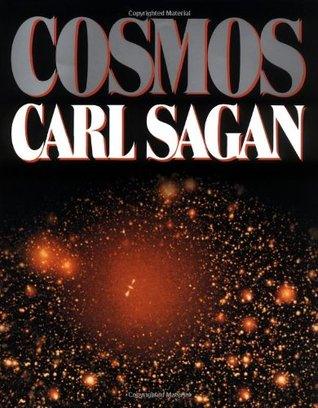The Botany of Desire: A Plant’s-Eye View of the World by Michael Pollan Book Summary
Discover the captivating insights of "The Botany of Desire" by Michael Pollan in our comprehensive book summary. Explore key themes, reviews, and how plants shape our desires and culture. Dive into a plant's-eye view of the world and unlock the secrets of nature's influence on humanity.
The Botany of Desire: A Plant's-Eye View of the World Book Summary
Michael Pollan's groundbreaking work explores how four plants—apples, tulips, marijuana, and potatoes—have evolved to satisfy human desires while simultaneously shaping our civilization. This fascinating botanical perspective reveals the intricate co-evolutionary dance between humans and plants, challenging our assumptions about who's really in control of agriculture and domestication. Pollan masterfully demonstrates how plants have essentially "domesticated" us by appealing to our fundamental desires for sweetness, beauty, intoxication, and control. Through compelling storytelling and scientific insight, he unveils the hidden partnerships that have transformed both species and landscapes, offering readers a revolutionary understanding of our interconnected relationship with the natural world.
Discover deeper insights and connect ideas seamlessly with our detailed Our Mutual Friend Book Summary, Review & Key Insights for a richer reading experience.
The Botany of Desire: A Plant's-Eye View of the World by Michael Pollan - Introduction
You know what totally blew my mind in The Botany of Desire? Michael Pollan flips the whole idea of plants being passive around. It’s like, plants aren’t just sitting there waiting to be used—they’re actually manipulating us to spread their genes. I had no idea that apples, tulips, marijuana, and potatoes have basically evolved by appealing to our desires, almost like they’re playing us. It made me rethink how I look at the food I eat and even my garden.
I picked up this book because I’m always curious about nature and how it connects to our daily lives, especially food and health. Plus, Pollan’s reputation for making science feel like a story you can’t put down was a big draw. And honestly, it didn’t disappoint. It’s nonfiction, but it reads almost like a novel, weaving science, history, and personal anecdotes in a way that’s super engaging.
If you’re someone who loves gardening, nature, or just wants to understand the world of plants beyond the supermarket shelf, this book is perfect for you. It’s about 297 pages, so you could finish it in a few evenings or a lazy weekend—definitely worth the time.
So, if you’re curious about how plants and humans have this weird, mutual relationship that shapes both our worlds, I really think you’d get a kick out of this. It’s science, but it feels personal, and it might just change how you see your next apple or flower.
What is The Botany of Desire: A Plant's-Eye View of the World About?

"The Botany of Desire: A Plant's-Eye View of the World" by Michael Pollan explores the intricate relationship between humans and four specific plants—tulips, marijuana, potatoes, and apples—demonstrating how these plants have evolved alongside human desires. The main message emphasizes that plants have shaped human behavior and culture just as much as we have influenced their development. Key concepts include the idea of co-evolution between humans and plants, the role of desire in shaping cultivation practices, and the broader implications of this relationship for understanding our place in the natural world.
About Book Author - Michael Pollan
Ladies and gentlemen, it’s my pleasure to introduce Michael Pollan, a remarkable thinker and storyteller whose journey into the world of plants began with a simple curiosity about our relationship with nature. Michael didn’t start out as a writer focused on food and agriculture; he initially explored the realms of literature and journalism. However, his fascination with how plants influence human lives led him to pen the thought-provoking book, The Botany of Desire: A Plant's-Eye View of the World.
What’s interesting about Michael is that he once spent time cultivating a garden that wasn’t just about growing food, but about understanding the deeper connections we have with the natural world. His expertise shines through in works like In Defense of Food and Cooked, where he seamlessly blends personal narrative with cultural critique.
Michael’s unique perspective stems from his ability to intertwine science and storytelling, making him exceptionally qualified to explore how plants shape our desires and, ultimately, our lives. Please join me in welcoming Michael Pollan!
More Books To Find
The Botany of Desire: A Plant's-Eye View of the World - Book Overview
It's basically about how four different plants—like the apple, tulip, marijuana, and potato—have shaped human desires and vice versa. Pollan explores how these plants have evolved alongside us, almost like a dance where we influence each other.
He wrote it to challenge the traditional view of nature as something separate from us. Instead of just focusing on how humans exploit plants, he shows that there's a mutual connection, where plants have their own strategies to survive and thrive through us.
What makes it different is Pollan's unique perspective. Rather than just listing facts or historical accounts, he combines science, history, and personal anecdotes, making it feel like a conversation rather than a lecture. It’s like he’s inviting you to see the world through the eyes of these plants.
One story that really stuck with me was about the tulip mania in the 17th century. People were so obsessed with tulips that they were trading them for insane amounts of money, almost like a stock market bubble. It made me realize how our desires can lead to irrational behavior, and how deeply intertwined our lives are with the plants around us. Overall, it's a fascinating read that shifts your perspective on nature and our relationship with it.
Key Insights of The Botany of Desire: A Plant's-Eye View of the World
The Botany of Desire by Michael Pollan offers a unique perspective on the relationship between humans and plants, emphasizing how plants have evolved to fulfill human desires.
First Insight: Pollan explores the concept of mutualism, illustrating that plants and humans have co-evolved. For instance, the apple is not just a fruit; it represents the human desire for sweetness, leading to its cultivation and spread.
Second Insight: The book delves into the tulip's role in human obsession with beauty and status. The tulip mania of the 17th century serves as a cautionary tale about how desire can drive economic bubbles and societal behavior.
Third Insight: Pollan highlights the potato and its connection to the desire for sustenance. The potato's adaptability and nutritional value have made it a staple food, yet its history reveals the dangers of monoculture and reliance on a single crop.
Fourth Insight: The cannabis chapter examines the desire for altered states of consciousness. Pollan discusses how the plant has been demonized and revered, reflecting societal attitudes towards pleasure and legality.
Fifth Insight: Ultimately, Pollan argues that understanding plants through their perspective can enrich our appreciation of nature. This plant’s-eye view encourages us to reconsider our relationship with the natural world and recognize the interdependence between humans and plants.
These insights challenge us to reflect on our desires and the ways in which they shape our interactions with the environment.
Who Should Read This Book
"The Botany of Desire" by Michael Pollan is a must-read for anyone interested in the intricate relationship between humans and plants. Gardeners, botanists, and environmental enthusiasts will find valuable insights into how plants influence our desires and behaviors. Additionally, readers curious about the intersection of nature and culture, as well as those who appreciate thought-provoking narratives, will be captivated by Pollan's exploration of four specific plants. This book appeals to anyone seeking a deeper understanding of the natural world and our role within it, making it a compelling read for a diverse audience.
Read If You Are
- A nature enthusiast curious about the relationship between humans and plants.
- Someone interested in the intersection of science and culture.
- A reader looking to explore thought-provoking perspectives on evolution and desire.
Skip If You Are
- Not interested in the relationship between humans and plants.
- Prefer straightforward scientific texts without narrative storytelling.
- Dislike exploring philosophical and emotional perspectives on nature.
Important Takeaways from this Book
-
Start a Small Garden: Choose a few pots or a small patch in your yard and plant easy-to-grow herbs like basil or mint. This action connects you to nature, provides fresh ingredients for cooking, and promotes mindfulness. Ensure you have access to sunlight and water.
-
Research One Plant Species: Pick a plant that interests you and spend 30 minutes learning about its history and uses. Understanding the relationship between humans and plants fosters appreciation and informs your gardening or consumption choices. Use online resources or library books.
-
Incorporate Native Plants: Replace at least one non-native plant in your garden with a native species. Native plants support local ecosystems, attract beneficial wildlife, and require less maintenance. Check local gardening guides for suitable options in your area.
-
Practice Mindful Consumption: When purchasing food, choose one item that is grown sustainably or locally. This choice supports ethical farming practices and reduces your carbon footprint. Look for farmers' markets or local farm shops in your community.
-
Engage in Plant-Based Cooking: Commit to preparing at least one plant-based meal this week. This not only enhances your culinary skills but also promotes health and sustainability. Gather fresh vegetables and search for simple recipes online to get started.
Book Review
I picked up "The Botany of Desire" expecting a straightforward exploration of plants and their roles in our lives, but what I got was so much more. Michael Pollan masterfully weaves together the stories of four plants—apple, tulip, marijuana, and potato—showing how they’ve shaped human desires and culture.
One of the book’s biggest strengths is Pollan's engaging writing style. He has a knack for making complex botanical concepts accessible and fascinating. For instance, his exploration of the apple’s journey from wild fruit to cultivated staple was both informative and captivating. The pacing kept me hooked; each section felt like a mini-adventure that built on the last.
However, there were moments when I felt the narrative meandered a bit, particularly in the marijuana chapter. While the historical context was interesting, I wished for a tighter focus on the plant’s impact on society rather than getting lost in lengthy anecdotes.
In comparison to other nature-focused books like "The Hidden Life of Trees," Pollan’s work felt more personal and less academic, making it an easier read for those new to the genre.
Overall, I found "The Botany of Desire" to be a thought-provoking journey that challenges our perception of plants and their influence on us. I’d recommend it to anyone curious about the intersection of nature and human desire, but perhaps not to those looking for a purely scientific text. It’s a delightful read that encourages you to see the world through a plant’s eyes.
Final Thoughts
If I'm being honest, finishing The Botany of Desire left me with a profound appreciation for the intricate relationship between humans and plants. Pollan's exploration of how four plants—apples, tulips, marijuana, and potatoes—have shaped our desires and cultures was both enlightening and thought-provoking.
I'd definitely recommend this if you're someone who enjoys delving into nature, psychology, or the history of our interactions with the environment. It's a must-read for gardeners, foodies, and anyone curious about the unseen influences of plants in our lives. However, skip this one if you're looking for a straightforward gardening manual or a dry scientific text; Pollan's style is much more narrative and philosophical.
The thing that surprised me most was how Pollan illustrated that plants aren't just passive entities; they actively shape human behavior and desires. Months from now, I’ll still be reflecting on the idea that we often think we're in control, but in reality, plants have been guiding us all along.
As for reading it again, I’d recommend the full book over a summary. There's something special about Pollan's storytelling that deserves to be experienced in its entirety. Overall, my reading experience was delightful and truly eye-opening—definitely a journey worth taking!
Frequently Asked Questions
How long does it take to read The Botany of Desire: A Plant's-Eye View of the World?
The Botany of Desire by Michael Pollan has 297 pages. On average, it takes about 8-10 hours to read, depending on your reading speed. Enjoy the journey through the fascinating relationship between humans and plants!
What makes "The Botany of Desire: A Plant's-Eye View of the World" different from other books in this genre?
The Botany of Desire uniquely combines storytelling with scientific insight, exploring the intricate relationship between humans and plants. Pollan's engaging narrative perspective shifts the focus to plants’ desires, offering a fresh, thought-provoking lens that challenges conventional views in nature writing and plant biology.
Who is the target audience for The Botany of Desire: A Plant's-Eye View of the World
The target audience for "The Botany of Desire" includes nature enthusiasts, gardeners, environmentalists, and readers interested in the intersection of botany and human culture. It appeals to those curious about the relationship between plants and people, as well as anyone seeking a deeper understanding of nature's influence on society.
Are there any criticisms or limitations of The Botany of Desire: A Plant's-Eye View of the World
Critics argue that Pollan's anthropomorphism oversimplifies complex botanical interactions and may mislead readers about plant evolution. Some also feel the book lacks scientific rigor, focusing more on narrative than empirical evidence, potentially diminishing its credibility among academic audiences.
What is the main theme of The Botany of Desire: A Plant's-Eye View of the World by Michael Pollan
The main theme of "The Botany of Desire" explores the reciprocal relationship between humans and plants, highlighting how four specific plants—apples, tulips, marijuana, and potatoes—have shaped human desires and culture, illustrating the interconnectedness of nature and humanity.
Tags:
Michael Pollan, The Botany of Desire: A Plant's-Eye View of the World, The Botany of Desire: A Plant's-Eye View of the World Book, The Botany of Desire: A Plant's-Eye View of the World Book Rating, The Botany of Desire: A Plant's-Eye View of the World Book Review, The Botany of Desire: A Plant's-Eye View of the World Book Summary, The Botany of Desire: A Plant's-Eye View of the World By Michael Pollan, The Botany of Desire: A Plant's-Eye View of the World Description, The Botany of Desire: A Plant's-Eye View of the World Short Summary

Michel Fisher
Michel Fisher is a passionate fiction enthusiast and book blogger who writes about emotional reads, character-driven stories, and contemporary romance authors that captivate hearts and minds.

The Botany of Desire: A Plant's-Eye View of the World
Book Overview
Description
Every schoolchild learns about the mutually beneficial dance of honeybees and flowers: The bee collects nectar and pollen to make honey and, in the process, spreads the flowers’ genes far and wide. In The Botany of Desire, Michael Pollan ingeniously demonstrates how people and domesticated plants have formed a similarly reciprocal relationship. He masterfully links four fundamental human desires—sweetness, beauty, intoxication, and control—with the plants that satisfy them: the apple, the tulip, marijuana, and the potato. In telling the stories of four familiar species, Pollan illustrates how the plants have evolved to satisfy humankind’s most basic yearnings. And just as we’ve benefited from these plants, we have also done well by them. So who is really domesticating whom?
Key Points
Plants manipulate humans for survival
Characters
Publisher
Random House Trade Paperbacks
First Publish Date
8/5/2001
Awards
Borders Original Voices Award for Nonfiction (2001)





